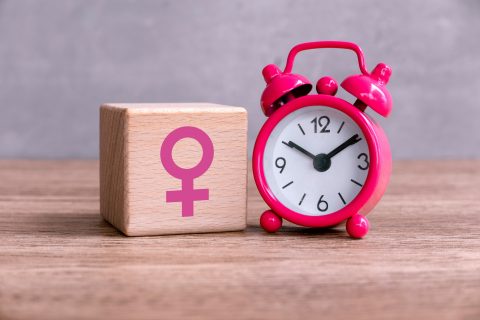Women have suffered through hot flashes and hormone fluxes thinking there was no help for symptoms of menopause. New York Times Magazine staff writer Susan Dominus joins host Krys Boyd to talk about hormone therapy, which was once regularly prescribed but now is rarely used following a flawed study that doctors are hesitant to move past. Her article is “Women Have Been Misled About Menopause.”
This episode originally aired Feb. 23, 2023.
Blog Post: What we really know about hormone therapy
—By Brianna Flores, Think Intern
Menopause is rarely brought up in conversations, but why?
Throughout time, women’s health has been neglected in research and discussion. It’s because of this that we don’t know a lot about the female body and menopause is barely understood.
“The lack of insight into all of this is really a reflection of a high cultural tolerance for women suffering,” said New York Times Magazine reporter Susan Dominus. “This is something that we haven’t cared enough culturally about to really address, that there aren’t more options beyond hormone therapy.”
Hormone therapy is the most common solution to help with the symptoms of menopause. The treatment consists of pills that add levels of estrogen and progesterone (female hormones) that women in menopause do not create enough of.
In 2002, researchers conducted a study with multiple trials of large groups of women to try hormone therapy to see its effects. Dominus explains that although the study was flawed in its design, the public became concerned when doctors saw indications of health risks like cancer and heart disease.
“Risks of clots and strokes and coronary heart disease and breast cancer… those are the primary concerns that… were small, but they were real elevated risks,” Dominus said about the study’s findings.
She explains that although the risk for individuals was small, the statistics presented in the study were not presented clearly in the media.
“The numbers being batted around were numbers like women will experience a 26% increase in breast cancer, and the way it was conveyed was with great alarm,” Dominus said. “Really what that means is you have a 26% increased risk of breast cancer on top of whatever your base risk is. And if your risk between the age of 50 and 60 is fairly low… let’s say 2% or around there, then a 26% increase on 2% is not all that high.”
Essentially, for every 10,000 women who participate in hormone therapy who otherwise would not have, there may be eight additional cases of breast cancer in addition to the baseline that there would have been without hormone therapy.
After the misleading statistics from this study, fewer women became aware of the benefits of hormone therapy.
There is a growing amount of research still going on, but some may be hesitant to try it because of the lack of resources with clear evidence on how to treat menopause symptoms.
“It’s important for gynecologists or internists to affirm to a woman rather than just suggest, ‘Oh, that’s normal aging,’ or leave her to worry that this is the beginning of something worse,” Dominus says.
Once women reach menopause, they can experience common symptoms like hot flashes, increased chance of depression, and bone strength loss.
There are cases where therapy isn’t needed. Dominus says that women during menopause go through a difficult transition, and it shows how strong they are.
“It’s really a testament to the resilience of a woman’s body,” Dominus says. “It does manage to rebound in so many ways given the real plummeting of estrogen in her body.”
To learn more about menopause and how women view the health phenomenon, listen to the podcast above.
Additional Resources:
Menopause – Diagnosis and treatment – Mayo Clinic
Menopause Prevention: Diet, Exercise, and More (healthline.com)



